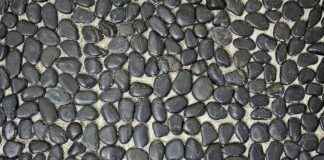This article explores essential Indian dishes that every New Yorker should experience, highlighting their unique flavors, cultural significance, and where to find them in the city.
What is Dosa and Why You Should Try It?
Dosa is a traditional South Indian dish that has gained popularity worldwide, especially in urban centers like New York City. This crispy crepe is made from a fermented batter of rice and lentils, offering a unique texture that is both light and satisfying. Often served with an array of chutneys and sambar, a spicy lentil soup, dosa is incredibly versatile. You can enjoy it plain or filled with a variety of ingredients, such as spiced potatoes or paneer. In New York, restaurants like Chennai Garden and Udupi Palace serve authentic dosas that will transport your taste buds straight to South India.
The Richness of Dal: Understanding Its Varieties
Dal, which refers to lentils in Hindi, is a staple in Indian cuisine and comes in many forms. Varieties like Tadka Dal and Dal Makhani showcase the diversity of flavors found in Indian cooking. Tadka Dal is typically yellow lentils tempered with spices and topped with a drizzle of ghee, while Dal Makhani is a rich, creamy preparation made with black lentils and kidney beans. Each type of dal offers unique nutritional benefits, making it a healthy addition to any meal. For a taste of authentic dal, head over to Indian Accent or Brick Lane Curry House in NYC.
Exploring Biryani: The Aromatic Rice Dish
Biryani is a dish that transcends borders, with each region in India offering its unique twist. This fragrant rice dish combines basmati rice with marinated meat or vegetables, spices, and herbs, resulting in a complex flavor profile. The layering of ingredients creates a delightful experience for the palate. In New York, you can find exceptional biryanis at places like Biryani House and Awadh. Whether you prefer chicken, lamb, or a vegetarian version, biryani is a must-try for any food lover.
Why Paneer Tikka is a Vegetarian Delight
Paneer Tikka is an iconic vegetarian appetizer that has captured the hearts of many, including meat lovers. Made from marinated paneer (Indian cottage cheese) that is grilled to perfection, this dish is known for its smoky flavor and vibrant spices. The marinade typically includes yogurt, ginger, garlic, and a blend of spices, which infuse the paneer with rich flavors. Enjoy it with mint chutney for an extra kick. To savor the best Paneer Tikka in NYC, visit Dhaba or Punjabi Deli.
The Comfort of Butter Chicken: A North Indian Classic
Butter Chicken, or Murgh Makhani, is a creamy, tomato-based curry that has become a global favorite. The dish is characterized by its rich flavor and tender chicken pieces, making it a comforting option for any occasion. The secret to its deliciousness lies in the slow cooking process, which allows the spices to meld beautifully. For a taste of authentic Butter Chicken, check out MasalaWala or Patel Brothers in New York City.
Finding the Perfect Chaat: A Street Food Experience
Chaat is a vibrant category of Indian street food that offers a delightful mix of flavors and textures. From the tangy tamarind chutney to the crispy papdi, each bite is an explosion of taste. Popular varieties include Pani Puri, Bhel Puri, and Aloo Tikki Chaat. For an authentic chaat experience, visit Chaatwala or Chaat Cafe in NYC, where you can indulge in this exciting culinary adventure.
The Importance of Naan: More Than Just Bread
Naan is a leavened Indian flatbread that is typically served with curries and other main dishes. Its soft, pillowy texture makes it the perfect accompaniment for soaking up rich sauces. While traditional naan is made with white flour, you can also find variations like garlic naan and whole wheat naan. To experience the best naan in New York, head to Indus Valley or Bhatti Indian Grill.
Exploring Samosas: The Iconic Indian Snack
Samosas are deep-fried pastries filled with spiced potatoes, peas, or meat. Their crispy exterior and flavorful filling make them a beloved snack that embodies Indian street food culture. Often served with mint or tamarind chutney, samosas are perfect for any occasion. You can find delicious samosas at Pakistani Grill or Bombay Grill in NYC.
The Sweetness of Gulab Jamun: A Traditional Dessert
Gulab Jamun is a traditional Indian dessert that is loved for its sweet, syrupy goodness. Made from milk solids that are deep-fried and soaked in sugar syrup, this treat is a delightful way to end any Indian meal. For the best Gulab Jamun in New York, visit Sweet Indian or Chaat House.
Understanding the Role of Spices in Indian Cuisine
Spices are the backbone of Indian cooking, providing flavor, aroma, and numerous health benefits. Common spices like cumin, coriander, and turmeric not only enhance the taste of dishes but also offer various medicinal properties. Understanding these spices can deepen your appreciation for Indian cuisine and its rich history. For those interested in learning more, consider visiting local spice markets or taking a cooking class.
Finding Authentic Indian Cuisine in New York City
New York City is home to a vibrant Indian food scene, with numerous restaurants offering authentic dishes. Areas like Jackson Heights and Curry Hill are known for their concentration of Indian eateries, where you can explore a variety of flavors and styles. Whether you’re looking for a casual dining experience or a fine dining option, NYC has something to satisfy every craving.
How to Pair Indian Dishes with Beverages
Pairing Indian dishes with the right beverages can elevate your dining experience. Traditional drinks like lassi and chai complement the bold flavors of Indian cuisine perfectly. Additionally, craft beers and wines can also enhance the meal. Experimenting with different pairings can lead to delightful discoveries.
Tips for Making Indian Dishes at Home
For those inspired to try Indian cooking at home, understanding key techniques and ingredients is essential. Simple recipes and tips can help you recreate your favorite dishes in your own kitchen. Start with basic spices and gradually build your pantry, and don’t hesitate to explore various cooking methods to find what works best for you.
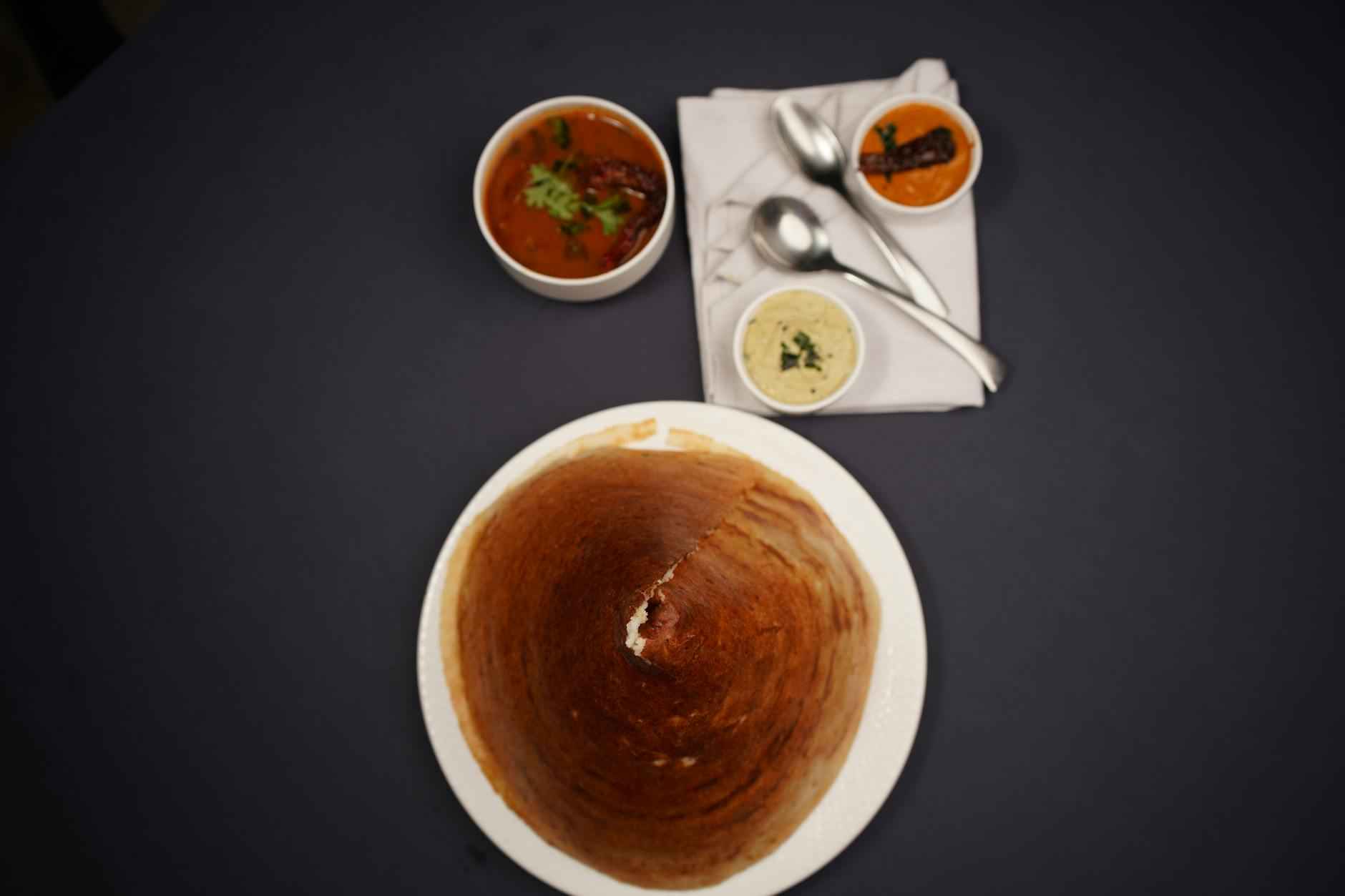
What is Dosa and Why You Should Try It?
Dosa is more than just a dish; it is a culinary experience that encapsulates the essence of South Indian cuisine. This traditional crepe is made from a fermented batter of rice and lentils, which not only contributes to its unique flavor but also provides a delightful crispy texture that is hard to resist. The process of fermentation adds a subtle tanginess to the dosa, making it a versatile base for various toppings and accompaniments.
One of the remarkable aspects of dosa is its adaptability. While the classic dosa is thin and crispy, variations abound across different regions and preferences. For instance, the Masala Dosa is filled with a spiced potato mixture, offering a hearty and flavorful twist. Another popular variant is the Rawa Dosa, made with semolina, which provides a different texture and taste profile. Whether you prefer it plain or stuffed, dosa caters to a wide range of palates.
When it comes to serving, dosa is typically accompanied by a variety of chutneys and sambar. Chutneys can range from coconut to tomato and mint, each bringing its own unique flavor that complements the dosa beautifully. Sambar, a lentil-based vegetable stew, adds a savory depth to the meal, making it not just a dish but a complete culinary experience. The combination of crispy dosa, tangy chutney, and hearty sambar is a celebration of flavors that is sure to tantalize your taste buds.
For those in New York City, finding authentic dosa is easier than you might think. Numerous restaurants across the city specialize in South Indian cuisine, offering a variety of dosas that can cater to both traditionalists and those looking for a modern twist. Areas like Jackson Heights and Curry Hill are known for their vibrant Indian food scenes, where you can discover hidden gems serving up delicious dosas and other South Indian specialties.
In addition to being delicious, dosa is also a healthy option. Made primarily from rice and lentils, it is gluten-free and packed with protein, making it a great choice for those who are health-conscious. The fermentation process not only enhances flavor but also improves digestibility, making dosa a nutritious addition to your diet.
In conclusion, dosa is a dish that embodies the rich culinary heritage of South India. Its crispy texture, versatility, and the variety of accompaniments make it a must-try for anyone looking to explore Indian cuisine. Whether you are a seasoned foodie or a newcomer, indulging in a dosa experience is sure to be a memorable part of your culinary journey.
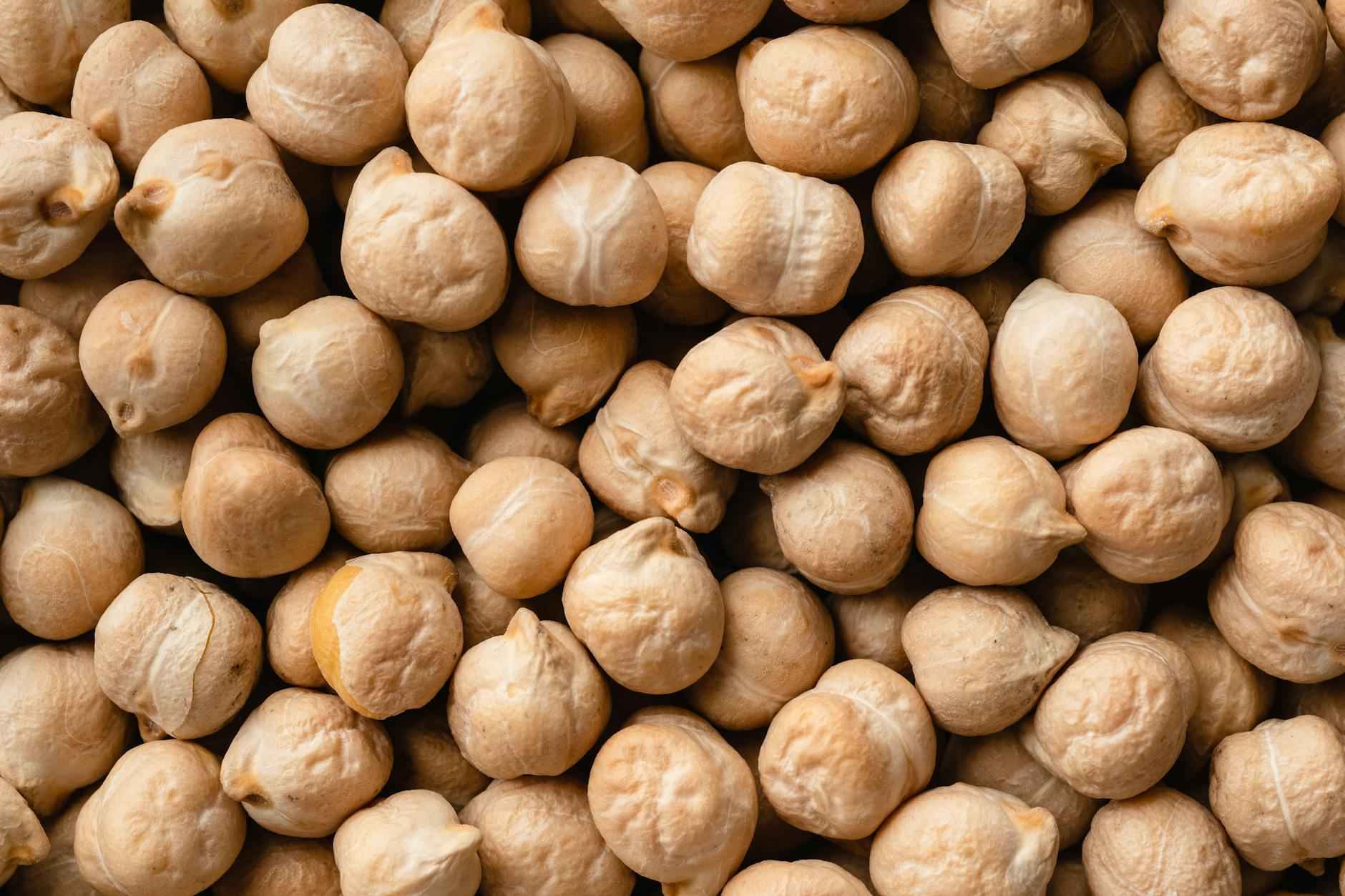
The Richness of Dal: Understanding Its Varieties
Dal, a term that refers to lentils, is an integral component of Indian cuisine, offering not only a rich variety of flavors but also numerous health benefits. This versatile ingredient is celebrated across the country, with each region presenting its unique take on dal dishes. From the creamy richness of Dal Makhani to the spiced simplicity of Tadka Dal, the world of dal is as diverse as it is delicious. In this section, we will explore various types of dal, their preparation methods, and their nutritional benefits, ensuring that you appreciate the full spectrum of this staple food.
- Tadka Dal: This dish is made from yellow lentils, typically split yellow moong dal or toor dal. It is cooked until soft and then tempered with a mixture of spices, including cumin and garlic, which are sautéed in oil or ghee. The result is a fragrant, flavorful dish that pairs beautifully with rice or naan.
- Dal Makhani: Originating from Punjab, this dish features whole black lentils (urad dal) and kidney beans (rajma) cooked slowly with butter and cream. The slow cooking process allows the flavors to meld, resulting in a rich, creamy texture that is often served with naan or rice.
- Chana Dal: Made from split chickpeas, chana dal has a nutty flavor and is often cooked with spices and vegetables. It is a great source of protein and is commonly enjoyed in various forms, including curries and soups.
- Masoor Dal: This red lentil variety cooks quickly and has a slightly sweet flavor. It is often used in soups and stews and is a favorite for its quick preparation time and nutritional benefits.
- Moong Dal: Split green gram is light and easy to digest, making it a popular choice for those seeking a healthy meal. It can be cooked as a simple dal or used in various dishes, including khichdi, a comforting rice and lentil dish.
Dals are not just delicious; they are also packed with essential nutrients. They are an excellent source of protein, especially for vegetarians, and provide a good amount of fiber, which aids digestion. Lentils are rich in vitamins and minerals, including iron, folate, and potassium. Regular consumption of dal can help in maintaining heart health, managing blood sugar levels, and supporting overall health.
Cooking dal can be a straightforward process, but mastering the techniques can elevate your dish. The key steps typically involve:
- Soaking: Soaking lentils for a few hours can reduce cooking time and enhance digestibility.
- Cooking: Lentils can be boiled on the stove or cooked in a pressure cooker for convenience. The goal is to achieve a soft, mushy consistency.
- Tempering: This is a crucial step where spices are heated in oil or ghee before being added to the cooked dal. This enhances the flavor and aroma.
Experimenting with various spices and ingredients can lead to unique variations, allowing you to tailor each dish to your taste preferences. Whether you prefer a spicy kick or a mild flavor, dal can accommodate all palates.
Dal is not just a meal; it is a cultural experience that reflects the essence of Indian cooking. Its versatility allows for endless experimentation, making it a staple in households across the nation. Whether enjoyed at a family gathering or a street-side eatery, dal brings people together, making it a must-try for anyone exploring Indian cuisine.
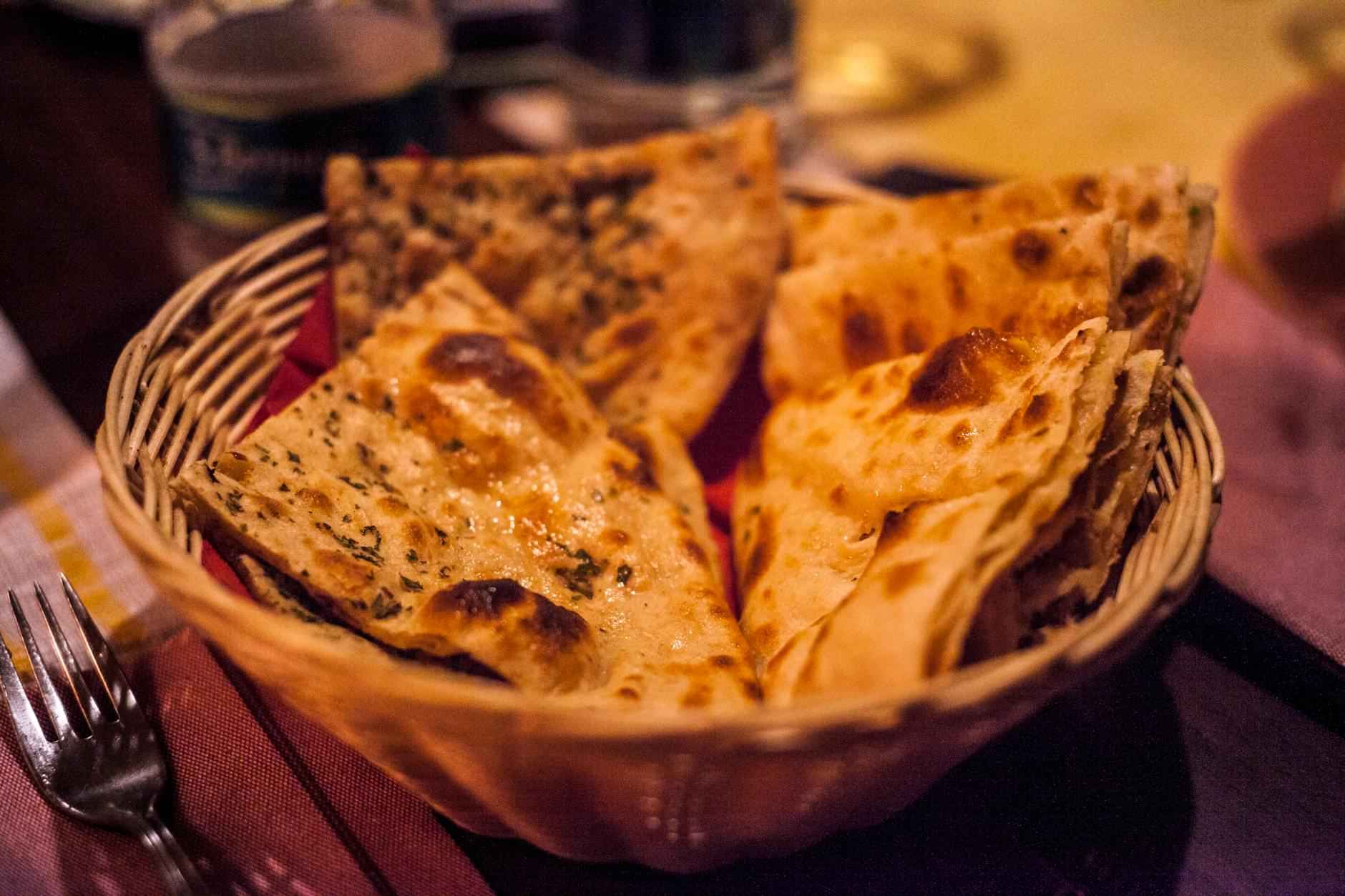
Exploring Biryani: The Aromatic Rice Dish
Biryani is not just a meal; it is a culinary experience that encapsulates the rich tapestry of Indian culture and heritage. This fragrant rice dish has roots that trace back to the royal kitchens of the Mughal Empire, where it was crafted with precision and passion. The essence of biryani lies in its ability to blend basmati rice with marinated meat or vegetables, creating a symphony of flavors that dance on the palate.
- Types of Biryani: There are numerous variations of biryani, each offering a unique taste profile. Popular types include:
- Hyderabadi Biryani: Known for its strong flavors and saffron-infused rice.
- Kolkata Biryani: Features potatoes and a hint of sweetness.
- Lucknowi (Awadhi) Biryani: A subtle and aromatic version cooked using the dum method.
The preparation of biryani is a meticulous process that involves marinating the meat or vegetables in a blend of spices such as cumin, cardamom, and cloves. These spices are essential as they infuse the dish with depth and character. The marinated ingredients are then layered with partially cooked rice and cooked together, allowing the flavors to meld beautifully. This method, known as layering, ensures that each grain of rice absorbs the rich flavors of the spices and the meat.
Why Biryani is a Must-Try Dish
Biryani is more than just a meal; it is a celebration of flavors and aromas. Its rich, complex taste makes it a beloved option for food lovers everywhere. Each bite offers a delightful combination of tender meat or vegetables, fragrant rice, and a mix of spices that tantalize the taste buds. The dish is often accompanied by raita (a yogurt-based side) or salad, which adds a refreshing contrast to the richness of the biryani.
Moreover, biryani holds a special place in Indian cuisine, often served during festive occasions and gatherings. It symbolizes togetherness and celebration, making it a dish that is not only delicious but also culturally significant.
Where to Find Biryani in New York City
For those in New York City eager to indulge in this aromatic dish, there are plenty of restaurants that offer authentic biryani. Areas like Jackson Heights and Curry Hill are known for their diverse Indian eateries, where you can find everything from traditional Hyderabadi biryani to innovative modern takes on this classic dish.
When searching for the perfect biryani, consider checking reviews and asking locals for recommendations to discover hidden gems that serve this culinary delight.
In conclusion, biryani is a dish that embodies the essence of Indian cuisine, with its rich history and vibrant flavors. Whether you are a seasoned foodie or a newcomer to Indian dishes, exploring biryani is an experience that promises to be both satisfying and memorable.
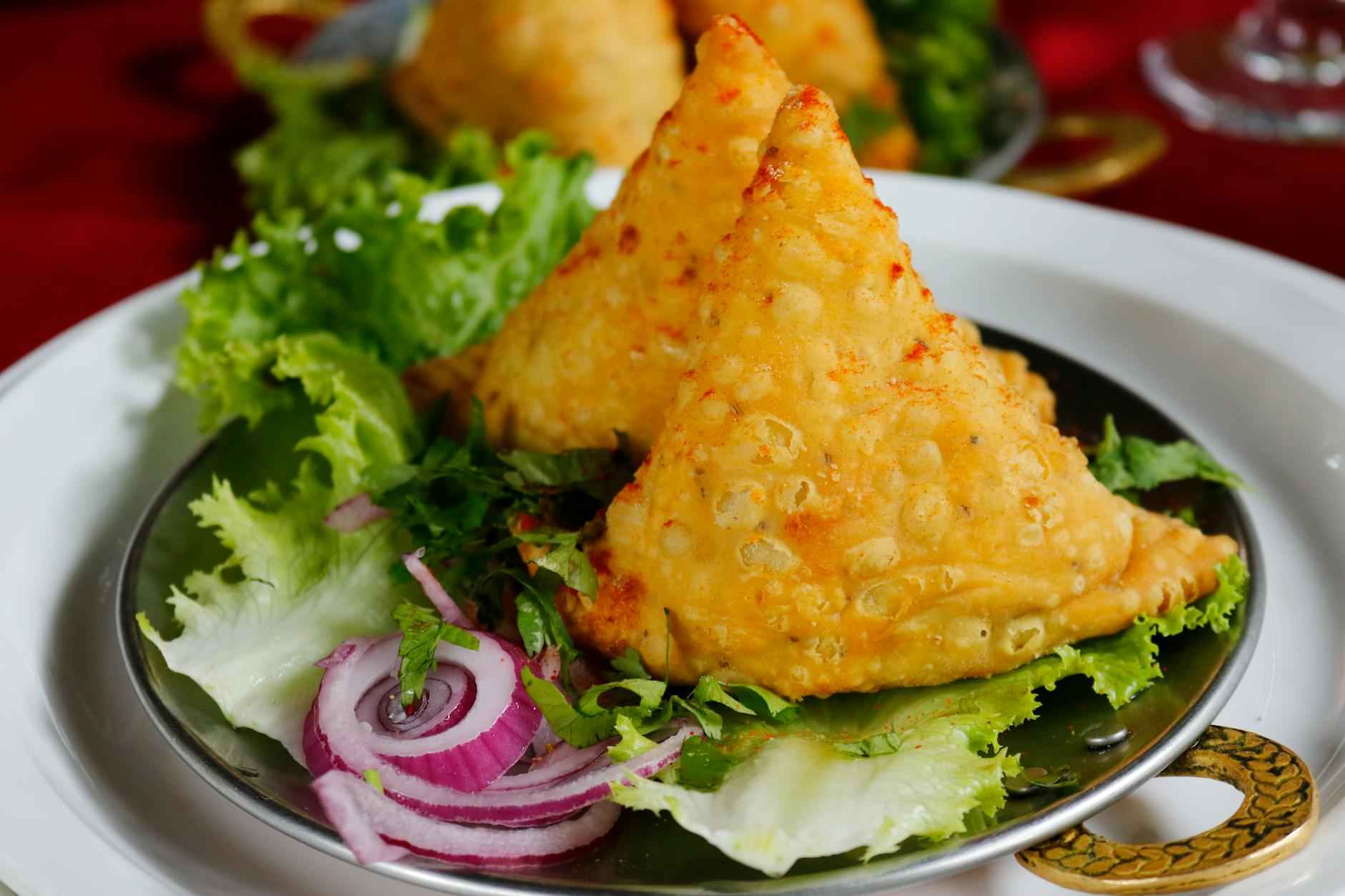
Why Paneer Tikka is a Vegetarian Delight
Paneer Tikka, a quintessential Indian appetizer, has garnered immense popularity not just among vegetarians but also among non-vegetarians who appreciate its rich flavors and unique preparation. This dish consists of marinated paneer, or Indian cottage cheese, which is skewered and grilled to perfection. The result is a delightful combination of smoky flavors and aromatic spices that create an unforgettable culinary experience.
What Makes Paneer Tikka So Special?
The magic of Paneer Tikka lies in its preparation. The paneer is typically marinated in a mixture of yogurt and spices, which may include turmeric, cumin, coriander, and red chili powder. This marinade not only enhances the flavor of the paneer but also helps to tenderize it, making each bite incredibly juicy. After marination, the paneer is skewered with vegetables like bell peppers and onions, which add an extra layer of flavor and texture. Grilling the skewers imparts a smoky aroma that elevates the dish to another level.
Health Benefits of Paneer Tikka
- Rich in Protein: Paneer is an excellent source of protein, making Paneer Tikka a nutritious choice for vegetarians looking to meet their protein needs.
- Low in Carbohydrates: This dish is low in carbs, making it suitable for those following low-carb diets.
- Calcium-Rich: Paneer is high in calcium, essential for bone health, making this dish not just tasty but also beneficial for your health.
Perfect Pairings for Paneer Tikka
To truly enjoy Paneer Tikka, it’s essential to pair it with the right accompaniments. Traditional Indian chutneys, such as mint or tamarind chutney, add a refreshing contrast to the smoky flavor of the dish. Additionally, serving it with a side of onion salad can enhance the overall experience, as the crunchiness of the onions complements the softness of the grilled paneer.
Where to Find the Best Paneer Tikka in New York
New York City boasts a plethora of restaurants that serve authentic Indian cuisine, including Paneer Tikka. Areas like Jackson Heights and Curry Hill are known for their vibrant Indian food scenes. Restaurants such as Dhaba and Indian Accent are highly recommended for their flavorful versions of this dish. For those who prefer a more casual dining experience, food trucks and street vendors often serve delicious Paneer Tikka that captures the essence of Indian street food.
Making Paneer Tikka at Home
For those inspired to recreate this delightful dish at home, the process is relatively straightforward. Start by cubing fresh paneer and preparing a marinade with yogurt and spices. Allow the paneer to soak in the marinade for at least an hour before skewering it with your choice of vegetables. Grill or bake the skewers until the paneer is golden and slightly charred. Serve hot with chutneys for an authentic experience.
In summary, Paneer Tikka is not just a dish; it’s a celebration of flavors, textures, and cultural significance. Its popularity across different demographics highlights its universal appeal, making it a must-try for anyone exploring the rich tapestry of Indian cuisine.

The Comfort of Butter Chicken: A North Indian Classic
Butter Chicken, also known as Murgh Makhani, is a dish that has transcended borders, becoming a beloved favorite not just in India but around the globe. This iconic North Indian curry is characterized by its creamy, tomato-based sauce and tender pieces of chicken, making it a comforting choice for any meal. The origins of Butter Chicken can be traced back to the 1950s in Delhi, where it was created by the chefs of the Moti Mahal restaurant. They devised this recipe to utilize leftover chicken and create a dish that would tantalize the taste buds.
The secret to the rich flavor profile of Butter Chicken lies in its unique combination of spices and ingredients. The dish typically includes a blend of garam masala, cumin, coriander, and fenugreek, which come together to create a symphony of flavors. The chicken is usually marinated in yogurt and spices, which not only tenderizes the meat but also infuses it with flavor. After marination, the chicken is grilled or roasted, adding a smoky depth to the dish before it is simmered in the luscious sauce.
What sets Butter Chicken apart from other curries is its creamy texture, achieved through the addition of butter and cream, which balances the spices beautifully. This indulgent sauce is perfect for soaking up with naan or rice, making every bite a delightful experience. The dish is often garnished with fresh cilantro and a drizzle of cream, enhancing its visual appeal and flavor.
For those looking to try Butter Chicken in New York City, there are numerous restaurants that serve this classic dish. Areas like Jackson Heights and Curry Hill are known for their authentic Indian cuisine, where you can find Butter Chicken made with traditional recipes. Many establishments also offer variations of the dish, including vegetarian options made with paneer or tofu, catering to diverse dietary preferences.
When it comes to pairing Butter Chicken with beverages, traditional options like lassi or chai work wonderfully to complement the rich flavors. For those who prefer something stronger, a crisp lager or a fruity red wine can enhance the dining experience.
In conclusion, Butter Chicken is not just a meal; it is a cultural experience that embodies the warmth and hospitality of Indian cuisine. Whether you are enjoying it at a restaurant or attempting to recreate it at home, this dish promises to deliver comfort and satisfaction. With its rich history and exquisite flavor, Butter Chicken remains a must-try for anyone keen on exploring the culinary landscape of India.

Finding the Perfect Chaat: A Street Food Experience
Chaat is not just food; it is a vibrant experience that encapsulates the essence of Indian street food culture. Originating from the bustling streets of India, chaat represents a variety of savory snacks that are a feast for the senses. Each bite of chaat is a delightful combination of flavors, textures, and aromas that will transport you to the heart of India. For New Yorkers, exploring chaat is an exciting culinary adventure that should not be missed.
Chaat comes in many forms, each with its unique ingredients and preparation methods. The most popular types include Pani Puri, Bhel Puri, Aloo Tikki Chaat, and Dahi Puri. These dishes are characterized by their use of fresh ingredients, tangy chutneys, and a variety of spices that create a symphony of tastes. For instance, Pani Puri consists of hollow puris filled with a spicy tamarind water, while Bhel Puri combines puffed rice with vegetables and tangy sauces. The contrasting textures—from crunchy to soft—make chaat an exciting experience.
One of the reasons chaat is so popular is its accessibility. Street vendors, known as chaatwallahs, can be found on nearly every corner in Indian cities, serving up these delicious snacks. The lively atmosphere surrounding these vendors adds to the charm of enjoying chaat. In New York City, you can find authentic chaat at various Indian restaurants and food trucks, particularly in areas like Jackson Heights and Curry Hill. Some notable places include Chaat Bhavan and Haldiram’s, where you can indulge in these flavorful snacks.
Chaat is not just a tasty treat; it also holds cultural significance. It is often enjoyed as a quick snack or appetizer before a meal, making it a staple in Indian households. The communal aspect of sharing chaat with friends and family fosters a sense of togetherness. Moreover, the vibrant colors and presentation of chaat contribute to its appeal, making it a popular choice for social gatherings and celebrations.
For those who want to recreate the magic of chaat at home, the process can be both fun and rewarding. The key is to use fresh ingredients and to experiment with different chutneys and spices. A basic Aloo Tikki Chaat can be made by preparing spiced potato patties, topping them with yogurt, green chutney, and tamarind sauce, and finishing with a sprinkle of sev (crispy chickpea noodles). This dish exemplifies the layered flavors that chaat is known for.
In conclusion, chaat is a culinary gem that every New Yorker should experience. Its diverse flavors, cultural significance, and lively street food tradition make it a must-try. Whether you’re enjoying it from a street vendor or recreating it at home, chaat promises to be an exciting addition to your culinary repertoire.
The Importance of Naan: More Than Just Bread
Naan is not merely a side dish; it is a cornerstone of Indian cuisine that holds a significant place in the hearts of many food lovers. This leavened flatbread is traditionally made from a dough that includes flour, water, yogurt, and yeast, which gives it its characteristic soft and fluffy texture. Unlike other types of bread, naan is typically cooked in a tandoor, a traditional clay oven, which imparts a unique smoky flavor that enhances its appeal.
- Texture and Flavor: The texture of naan is soft and pillowy, making it an ideal accompaniment to a variety of dishes. Its ability to soak up rich sauces and gravies makes it essential for enjoying curries, dals, and other Indian delicacies.
- Varieties of Naan: There are numerous variations of naan, each with its own unique twist. From garlic naan infused with fresh garlic and herbs to butter naan brushed with melted butter, these variations cater to different palates and preferences.
- Health Benefits: While naan is often considered a comfort food, it can also be part of a balanced diet. Whole wheat naan provides more fiber and nutrients compared to its white flour counterpart, making it a healthier choice.
How to Enjoy Naan: Naan is incredibly versatile and can be used in various ways. Here are some popular methods to enjoy this delightful bread:
1. **With Curries:** Naan pairs exceptionally well with rich, creamy curries like Butter Chicken or Paneer Tikka Masala. The bread acts as a perfect vehicle for scooping up the flavorful sauces.2. **As a Wrap:** Naan can be used to create wraps by filling it with grilled meats, vegetables, or paneer, along with some chutney or raita for added flavor.3. **With Dips:** Serve naan alongside a selection of dips, such as hummus or tzatziki, for a fusion twist that combines Indian and Middle Eastern flavors.
Naan in Indian Culture: Beyond its culinary significance, naan also plays a role in cultural and social gatherings. It is often served during special occasions, festivals, and family gatherings, symbolizing hospitality and togetherness. Sharing naan at the table encourages communal dining, which is a cherished aspect of Indian culture.
Where to Find the Best Naan in New York City: For those looking to experience authentic naan, New York City offers a plethora of Indian restaurants that serve this beloved bread. Neighborhoods like Jackson Heights and Curry Hill are known for their diverse range of Indian eateries, where you can enjoy freshly made naan alongside a variety of traditional dishes.
In conclusion, naan is much more than just a side of bread; it is a vital component of Indian dining that enhances the overall culinary experience. Its unique texture, flavor, and cultural significance make it a must-try for anyone exploring Indian cuisine. Whether you are enjoying it with a flavorful curry or using it to create a delicious wrap, naan is sure to delight your taste buds and leave you wanting more.
Exploring Samosas: The Iconic Indian Snack
Samosas, a quintessential Indian snack, are not just food; they are a cultural experience. These deep-fried pastries, typically filled with spiced potatoes, peas, or meat, are enjoyed by people of all ages. The crispy exterior contrasts beautifully with the flavorful filling, making them a beloved choice for street food enthusiasts and fine dining patrons alike. In this article, we will delve into the history, variations, and the best places to enjoy samosas in New York City.
What Makes Samosas So Special?
The charm of samosas lies in their unique combination of textures and flavors. The outer crust is made from a simple dough of flour, which is rolled thin and shaped into a triangular form before being deep-fried to a golden brown. This crispy shell is the perfect vessel for the rich and spiced filling inside. Common fillings include:
- Spiced Potatoes: Mashed potatoes mixed with peas, cumin, coriander, and other spices.
- Meat Variants: Ground lamb or chicken seasoned with aromatic spices.
- Vegetable Medley: A mix of seasonal vegetables and spices for a wholesome option.
The Cultural Significance of Samosas
Samosas have a storied history that dates back centuries. Originating from the Middle East, they made their way to the Indian subcontinent through trade routes. Over time, they evolved into the delicious snack we know today. In India, samosas are often served at festive occasions, family gatherings, and as a popular street food. They are a symbol of hospitality, often paired with tangy tamarind chutney or mint sauce for dipping.
Where to Find the Best Samosas in New York City
New York City boasts a vibrant Indian food scene, and samosas are a staple on many menus. Here are some top spots where you can indulge in this iconic snack:
- Chaat Cafe: Known for its authentic flavors, this cafe serves crispy samosas with an array of chutneys.
- Pakistani Chaat House: Offers a variety of samosa fillings, including a delicious meat option.
- Bombay Bread Bar: A modern take on Indian street food, their samosas are a must-try.
Making Samosas at Home
If you’re feeling adventurous, making samosas at home can be a rewarding culinary project. Here’s a simple recipe to get you started:
Ingredients:- 2 cups all-purpose flour- 4 medium-sized potatoes, boiled and mashed- 1 cup peas (fresh or frozen)- Spices: cumin, coriander, garam masala, salt to taste- Oil for fryingInstructions:1. Mix flour with a pinch of salt and enough water to form a smooth dough. Let it rest for 30 minutes.2. In a pan, heat oil and add spices, followed by mashed potatoes and peas. Cook until well combined.3. Roll out the dough, cut into circles, and fill with the potato mixture. Fold and seal the edges.4. Deep fry until golden brown. Serve hot with chutney.
In conclusion, whether enjoyed as a snack on the street or made at home, samosas hold a special place in Indian cuisine. Their delightful crunch and flavorful filling make them a must-try for anyone looking to explore the rich tapestry of Indian culinary traditions.

The Sweetness of Gulab Jamun: A Traditional Dessert
When it comes to Indian desserts, Gulab Jamun stands out as a quintessential treat that has won hearts around the globe. This delightful dessert is not just a sweet ending to a meal; it encapsulates the rich culinary heritage of India. With its origins tracing back to the Mughal era, Gulab Jamun is a testament to the intricate flavors and techniques that define Indian sweets. In this article, we will explore the making of Gulab Jamun, its cultural significance, and why it should be a part of your culinary journey.
The primary ingredients of Gulab Jamun are milk solids, typically in the form of khoya (reduced milk), which gives the dessert its unique texture. The dough is flavored with cardamom and sometimes a hint of rose water, enhancing its aromatic profile. After shaping the dough into small balls, they are deep-fried until golden brown, creating a crispy exterior that contrasts beautifully with the soft interior.
Once fried, the balls are soaked in a sugar syrup infused with rose essence and cardamom, allowing them to absorb the syrup’s sweetness. This soaking process is crucial, as it transforms the Gulab Jamun into a syrupy delight, making it a melt-in-your-mouth experience. The balance of flavors and textures is what makes this dessert so irresistible.
Gulab Jamun is more than just a dessert; it holds a special place in Indian culture. It is often served during festivals such as Diwali and Eid, symbolizing joy and celebration. The preparation of Gulab Jamun is often a communal activity, bringing families together during special occasions. Its presence at weddings and festive gatherings signifies good fortune and happiness.
In addition to its cultural importance, Gulab Jamun has also made its way into various culinary traditions across the globe. Many Indian restaurants outside of India feature this dessert on their menus, showcasing its universal appeal. This widespread popularity highlights how food can bridge cultural gaps and introduce people to the rich flavors of Indian cuisine.
For those in New York City looking to indulge in authentic Gulab Jamun, the options are plentiful. Neighborhoods like Jackson Heights and Curry Hill are known for their vibrant Indian food scenes, featuring restaurants that serve this beloved dessert. Some popular spots include:
- Bhatti Indian Grill – Known for their traditional recipes and warm ambiance.
- Jai Hind – A casual eatery famous for its homemade sweets.
- Pakistani and Indian restaurants in the area often serve their own variations of Gulab Jamun, each with unique twists.
Additionally, many restaurants offer Gulab Jamun as part of their lunch specials or buffet options, allowing you to enjoy this dessert alongside other Indian favorites. Whether you’re dining out or celebrating at home, Gulab Jamun is sure to bring a touch of sweetness to any occasion.
For those inspired to recreate this delightful dessert at home, making Gulab Jamun can be a rewarding experience. Here’s a simple recipe to get you started:
Ingredients:- 1 cup khoya (milk solids)- 1/4 cup all-purpose flour- 1/2 tsp baking powder- 1/4 tsp cardamom powder- Oil for deep frying- 1 cup sugar- 1 cup water- 1/2 tsp rose waterInstructions:1. In a bowl, mix khoya, flour, baking powder, and cardamom powder to form a dough.2. Shape the dough into small balls, ensuring there are no cracks.3. Heat oil in a pan and deep fry the balls until golden brown.4. In another pot, prepare sugar syrup by boiling sugar and water. Add rose water.5. Once the balls are fried, soak them in the warm syrup for at least 30 minutes before serving.
Enjoy your homemade Gulab Jamun warm or at room temperature, and savor the delightful blend of flavors that make this dessert a true classic.
Understanding the Role of Spices in Indian Cuisine
Indian cuisine is a vibrant tapestry woven from diverse regional flavors and cooking traditions. At the heart of this culinary art form lies the use of spices, which not only enhance the taste but also contribute to the health benefits of the dishes. In this section, we will delve into the significance of spices, focusing on some of the most common ones like cumin, coriander, and turmeric, and how they elevate Indian cooking.
Spices are more than just flavor enhancers in Indian cooking; they are the very essence of the cuisine. They provide aroma, color, and depth to dishes, transforming simple ingredients into extraordinary meals. The careful balance of spices is what characterizes Indian food, allowing for a wide range of flavors, from sweet to savory and everything in between.
- Cumin: Known for its warm, earthy flavor, cumin is often used in both whole and ground forms. It aids digestion and adds a distinctive taste to curries and rice dishes.
- Coriander: With its citrusy undertones, coriander seeds are commonly used in spice blends. The fresh leaves, known as cilantro, are also a popular garnish. Coriander is known for its anti-inflammatory properties.
- Turmeric: This vibrant yellow spice is a staple in Indian kitchens. It has powerful antioxidant and anti-inflammatory effects, making it a health powerhouse. Turmeric is often used in curries and rice dishes.
The unique flavor profiles of spices can completely alter the perception of a dish. For instance, the addition of garam masala, a blend of various spices, can elevate a simple lentil soup to a gourmet experience. Each spice has its own role, contributing to the overall harmony of flavors.
Moreover, spices release their essential oils when heated, which enhances their aroma and flavor. This is why many Indian recipes call for spices to be tempered in oil before other ingredients are added. The sizzling sound and fragrant aroma that fill the kitchen are part of the magic of Indian cooking.
In addition to their culinary uses, many spices have been celebrated for their health benefits for centuries. For example:
- Ginger: Known for its anti-nausea effects and ability to aid digestion, ginger is often used in teas and curries.
- Cardamom: This aromatic spice is not only a flavor enhancer but also aids in digestion and has antimicrobial properties.
- Fenugreek: Often used in pickles and curries, fenugreek seeds are known to help regulate blood sugar levels.
By incorporating these spices into your diet, you can enjoy not only the rich flavors of Indian cuisine but also its numerous health benefits.
Understanding how to use spices effectively can transform your cooking. Here are some practical tips:
- Start with Whole Spices: Whole spices tend to have a more robust flavor than pre-ground ones. Toast them lightly before grinding to release their essential oils.
- Balance is Key: Experiment with different spices to find the right balance for your palate. Too much of one spice can overpower a dish.
- Layer Flavors: Add spices at different stages of cooking to build complexity. For example, add some spices during the initial sauté and others towards the end for a fresh burst of flavor.
By understanding the role of spices in Indian cuisine, you can enhance your cooking skills and appreciate the rich heritage behind each dish. Whether you are a novice in the kitchen or an experienced cook, embracing the world of spices will undoubtedly enrich your culinary journey.

Finding Authentic Indian Cuisine in New York City
New York City is a melting pot of cultures, and its culinary landscape reflects this diversity beautifully. Among the myriad of cuisines available, Indian food stands out for its rich flavors, vibrant colors, and aromatic spices. In this bustling metropolis, finding authentic Indian cuisine is an adventure that every food lover should embark upon. With neighborhoods like Jackson Heights and Curry Hill serving as the epicenters of Indian gastronomy, the city offers a plethora of dining options that cater to both traditional and modern tastes.
Jackson Heights is often regarded as one of the most diverse neighborhoods in Queens, and its Indian food scene is a testament to this. Here, you can find a variety of Indian restaurants that serve everything from street food to fine dining. One of the highlights of this neighborhood is the plethora of chaat vendors, where you can indulge in crispy, tangy snacks that burst with flavor.
- Pani Puri: These hollow, crispy puris filled with spicy water are a must-try.
- Aloo Tikki Chaat: A delightful mix of spiced potato patties topped with chutneys and yogurt.
In addition to street snacks, Jackson Heights is home to several renowned restaurants like Dhaba and Utsav, which offer a more upscale dining experience. These establishments pride themselves on using authentic recipes and fresh ingredients, ensuring that every bite is a journey through India’s diverse culinary heritage.
Curry Hill, located in the heart of Manhattan, is another hotspot for Indian cuisine. The area is named after the numerous Indian restaurants that line the streets, making it a convenient destination for those craving Indian flavors. Here, you can find a range of dishes that represent various regions of India.
- Biryani: This aromatic rice dish, often cooked with marinated meat or vegetables, is a highlight of many menus.
- Butter Chicken: A creamy, tomato-based curry that has gained popularity worldwide.
Restaurants like Chola and Curry in a Hurry are particularly popular, offering a mix of traditional and contemporary Indian dishes. The ambiance of these eateries often reflects the vibrant culture of India, making your dining experience even more enjoyable.
While Jackson Heights and Curry Hill are well-known for their Indian cuisine, there are also hidden gems scattered throughout the city. Exploring neighborhoods like Astoria or the Lower East Side can lead to delightful surprises. Small, family-run restaurants often serve dishes that are passed down through generations, providing an authentic taste of home-cooked Indian meals.
- Roti Roll: A popular street food option, these wraps are filled with spiced meats or vegetables.
- Thali: A traditional platter that offers a variety of dishes, allowing you to sample different flavors in one meal.
These lesser-known spots often prioritize authenticity over presentation, making them a favorite among locals who appreciate genuine Indian flavors.
In conclusion, New York City’s Indian food scene is as diverse as its population. From bustling neighborhoods like Jackson Heights and Curry Hill to hidden gems throughout the city, there is no shortage of authentic Indian cuisine to explore. Whether you’re a seasoned enthusiast or a newcomer to Indian food, the city offers a rich tapestry of flavors and experiences waiting to be discovered.

How to Pair Indian Dishes with Beverages
Pairing Indian dishes with the right beverages can significantly enhance your dining experience. The bold and diverse flavors of Indian cuisine call for drinks that can either complement or contrast these tastes, creating a harmonious balance on your palate. In this guide, we will explore various beverage options that pair beautifully with popular Indian dishes, ensuring that every meal is a delightful experience.
Traditional Indian beverages such as lassi, chai, and masala soda are not only refreshing but also serve as excellent companions to a variety of Indian dishes. For instance, lassi, a yogurt-based drink, can be an ideal pairing with spicy curries. Its cooling properties help to balance the heat from the spices, making it a favorite choice among many.
- Lassi: Best served with spicy dishes like butter chicken or paneer tikka.
- Chai: A wonderful accompaniment to savory snacks such as samosas or pakoras.
- Masala Soda: A fizzy drink that pairs well with chaat for a refreshing twist.
In recent years, the craft beer movement has gained momentum, and many breweries are producing beers that complement Indian cuisine. The hoppy bitterness of an IPA can contrast nicely with the richness of dishes like dal makhani, while a lighter lager can cleanse the palate after indulging in fried snacks like samosas.
- IPA: Pairs well with rich, creamy curries.
- Pale Ale: A great match for grilled meats like tandoori chicken.
- Wheat Beer: Complements spicy dishes and enhances the flavors of biryani.
While wine may not be the first beverage that comes to mind when thinking of Indian cuisine, it can be a sophisticated pairing option. A Riesling, with its sweetness and acidity, can balance the heat of spicy dishes. On the other hand, a Pinot Noir can enhance the flavors of grilled meats and rich curries.
- Riesling: Ideal for spicy dishes like vindaloo.
- Chardonnay: Complements creamy dishes such as butter chicken.
- Pinot Noir: Works well with grilled meats and tandoori dishes.
For those who prefer non-alcoholic beverages, options like coconut water, ginger ale, and fruit juices can also enhance the dining experience. Coconut water is particularly refreshing and pairs well with spicy dishes, while ginger ale can add a zesty kick to savory snacks.
- Coconut Water: A refreshing choice with spicy curries.
- Ginger Ale: Great with fried snacks like pakoras.
- Fruit Juices: Fresh juices like mango or pomegranate can enhance the flavors of various dishes.
In conclusion, the right beverage can elevate your Indian dining experience from ordinary to extraordinary. Whether you opt for traditional drinks, craft beers, or fine wines, there’s a perfect pairing for every dish. Experimenting with different combinations can lead to delightful discoveries, making your culinary journey through Indian cuisine even more enjoyable.

Tips for Making Indian Dishes at Home
For those aspiring to bring the vibrant flavors of Indian cuisine into their kitchens, understanding the essential techniques and ingredients is crucial. Indian cooking is not just about following recipes; it’s an art form that requires a blend of skill, intuition, and a passion for flavor. Here are some valuable tips to help you recreate your favorite Indian dishes with authenticity and ease.
- Start with Fresh Ingredients: The foundation of any great Indian dish is high-quality, fresh ingredients. Visit local markets to find fresh vegetables, herbs, and spices. Look for ingredients like coriander, cumin, turmeric, and ginger which are staples in Indian cooking.
- Understand the Importance of Spices: Spices are the heart of Indian cuisine. Each spice has its unique flavor profile and health benefits. Familiarize yourself with common spices, and don’t hesitate to experiment with them. Toasting whole spices before grinding them can enhance their flavor significantly.
- Master the Art of Tempering: Tempering, or tadka, is a crucial technique in Indian cooking. It involves heating oil and adding spices to release their essential oils and flavors. This step adds depth to your dishes, making them more aromatic and flavorful.
- Practice Cooking Techniques: Techniques such as sautéing, simmering, and slow cooking are fundamental in Indian cuisine. Each method contributes to the dish’s texture and flavor. For instance, slow cooking lentils can enhance their creaminess and allow spices to meld beautifully.
- Experiment with Regional Recipes: Indian cuisine is incredibly diverse, with each region offering unique dishes. Try your hand at South Indian recipes like dosa or idli, or explore North Indian favorites like butter chicken or paneer tikka. Each recipe provides a different experience and insight into the culture.
- Use the Right Cookware: Invest in quality cookware that suits Indian cooking. A heavy-bottomed pot or a traditional kadai (wok) is ideal for curries, while a non-stick pan is perfect for making dosas. The right tools can make a significant difference in your cooking experience.
- Don’t Skip the Marination: Marinating meats or paneer in yogurt and spices not only tenderizes them but also infuses them with flavor. Allowing enough time for marination can elevate your dishes to restaurant-quality.
- Serve with Authentic Accompaniments: Pair your dishes with traditional sides like naan, rice, or raita (yogurt sauce) to enhance the meal. These accompaniments balance flavors and textures, making your dining experience more enjoyable.
- Practice Patience: Indian cooking often requires patience, especially when it comes to developing flavors. Allowing your dishes to simmer can make a world of difference in taste. Don’t rush the process; good food takes time.
- Learn from Mistakes: Every cook makes mistakes. If a dish doesn’t turn out as expected, analyze what went wrong and learn from it. Cooking is a journey, and each experience will make you a better cook.
By following these tips, you can embark on a flavorful journey through Indian cuisine right from your kitchen. Whether you are preparing a simple dal or an elaborate biryani, embracing the techniques and traditions of Indian cooking will undoubtedly enrich your culinary repertoire.












